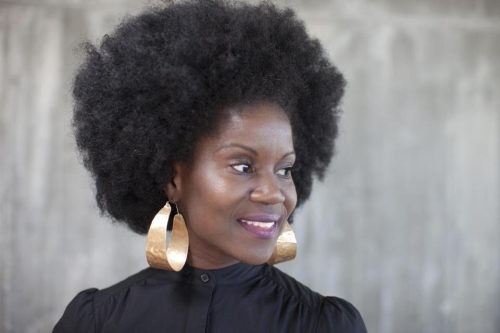
Source: Boston Globe
Lately, more and more women are chopping their relaxed ends off and transitioning into “going natural.”
The harsh chemicals found in relaxers, along with their packaging, do not bode well for the environment. Because of this reality, the decision to stop purchasing and using relaxers in itself is an extremely environmentally-friendly decision for black women to make.
But what of natural hair products? How can we, as black women who are disproportionately affected by climate change, protect ourselves and our world while still protecting our kinky ends?
Cutting down on heat and water usage
The most significant steps are examining your hair-care regimen and finding ways to limit water and heat usage. Heat does not bode well for any hair type, so try to limit the amount of times you straighten, blow-dry, etc. Instead of deep-conditioning under the dryer, try simply wearing the shower cap for a few hours while doing other times. In this way you will utilize precious time while saving the integrity of your hair. For ideas on using less water, try to see if washing every five days instead of maybe every three has the same effect. If you apply water daily to your hair for the L.O.C (Liquid, Oil, Cream) method, try bagging your hair at night- this method reportedly keeps your hair moist and softer, longer so that you don’t have to keep spritzing throughout the day.
Using natural ingredients for natural hair
Many ingredients found in the home can be just as effective as products you would go out to buy in the store- which would make sense because “natural” hair appreciates “natural” ingredients. Additionally, you reduce your carbon footprint by minimizing travel time by grocery shopping and hair-care shopping in one trip, cutting out the travel time used to ship the products to the store, and using minimal packaging for minimal waste. Ingredients to consider include avocado for repair and growth, eggs for protein and thickening, olive oil to lock in moisture, mayonnaise for deep conditioning, and honey (important: with other ingredients!) for promoting hair growth. The options are truly endless!
Choosing eco-friendly products
Understandably, using natural ingredients in the hair is not for everyone, especially those who are busy and don’t have the time to concoct their own treatments. For when you feel that your tresses need more TLC and specialized care, here is a guide to choosing products that are as environmentally friendly as possible:
- Buy local (which will likely help you buy black owned, killing two birds with one stone)
- Look for logos on the packaging that are usually green and circular that signify that the product is eco-friendly
- Try to buy products with minimal packaging or packaged with recyclable materials to reduce waste
- Google the ingredients to find out whether hidden in between the natural ingredients there are chemicals that shouldn’t go into your hair anyway
Choosing eco-friendly salons
Finally, do research on salons that are conscious about their environmental footprint. By spending your money in places that do good work, you set the prerogative for others to do the same in hopes of getting your money as well! A quick google search and asking around will lead you towards the right place. Markers of a green salon include being LEED certified, eco-friendly product use, and limited heat-techniques. For those in Harlem, a great place to check out is Harlem’s first eco-friendly salon, Simply Hair (on the corner of W 116th and Malcolm X Blvd).
In deciding to be conscientious every step of the way in caring for your hair, the Earth will thank you and your tresses will, too!
Tedra James is a WE ACT intern
Sources:
- http://www.refinery29.com/diy-natural-hair-products#slide
- http://www.realsimple.com/home-organizing/green-living/eco-friendly-products
- http://newamericamedia.org/2012/02/skin-deep-in-more-ways-than-one.php
